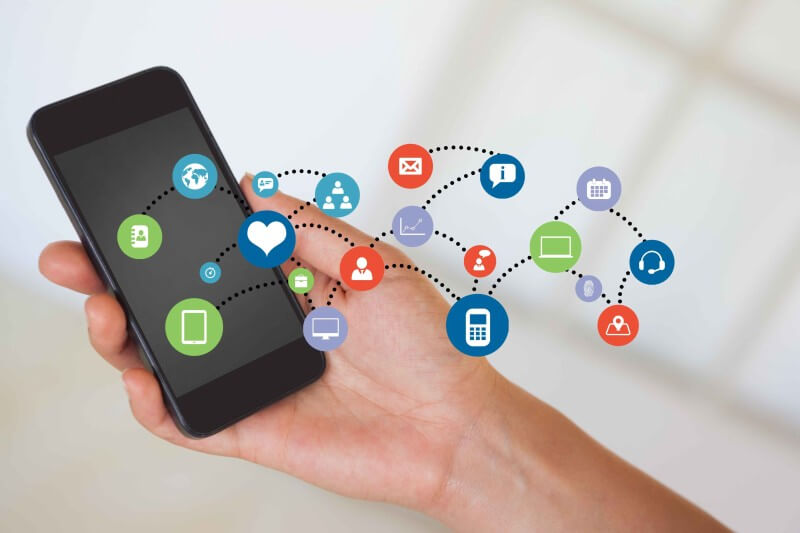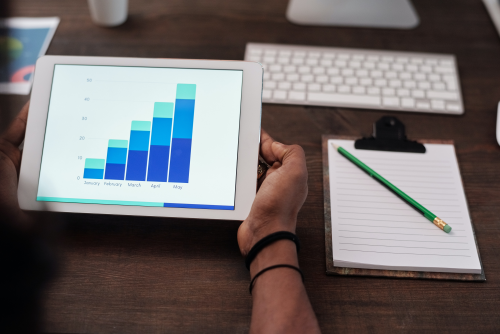Mobile apps are getting a lot of traction among businesses and service providers. From payment banks to e-commerce stores to healthcare, almost every industry is utilizing mobile apps to avail different services at the fingertips of their customers. Introducing mobile app in your business is an amazing idea to boost your customer satisfaction; but have you ever wondered what is the mobile app development process? As a business owner, you must know this process to actively participate in it, and get a refined, desired product.
Nitty Gritty of Mobile App Development Process
Since the demand for mobile apps is increasing, success in the industry might seem difficult. However, it isn’t; not everyone knows how to take advantage of this trend and build a successful app.
Statista’s Google Play insights disclose that 68.07% of apps never hit the 1000 download mark. Hence, it is easy than it seems to build a revenue-generating app. However, the way you develop the app impacts the result a lot. You can either outsource it or build it in-house but be an active part of the process to get the desired product. Continue reading this article to understand how to build a note-worthy app.

Step 1: Get Ready with Project Requirements
The foremost step in the development process is to understand the requirements of the project thoroughly. This step is crucial to set the base for further development.
You must know the basic details of the app. For example, the kind of application you want to develop, your budget and timeline, or if you have anything specific in mind. The more information you have beforehand, the smooth the process will be.
Step 2: Check Technical Feasibility
The next thing to figure out is if the app that you want to build is practically possible or not. This stage helps you figure out the technology and the platform (Android or iOS) you want to work on. Moreover, it lets you decide your budget, timeline, and a feasible concept for your mobile app.
Step 3: Get It Started
After deciding to go forward with the app, you should decide on the way to proceed. For example, are you going to work by yourself? Or are you opting for an experienced app development company? Either way, you must be aware of the process and participate in it actively to build the revenue-generating app.
Step 4: Wireframing of the app
Wireframes give shape to the idea. It is the blueprint of the app that defines the look and work of the app. Every requirement and concept are penned down, and wireframes are designed accordingly. Moreover, it helps in deciding the flow of the system along with the development timeline.
This stage is crucial in any mobile app development process. The aim is to define the functionality of the app. Wireframes provide a rough idea of how the app would look and function. It focuses on getting the user experience right rather than focusing on color schemes and style. Furthermore, they are device-specific designs and references for the developers.
To get this stage right, you need to ensure that the designs and flow are accurate. Moreover, the design should be according to what you want for your app as it stimulates your real-world product.
Step 5: UI/UX design
The purpose of the designing is to deliver an efficient and effortless user experience with polished designs. This stage includes creation of the style guide, mock-ups, and prototypes.
Style guides are the building blocks of the design. Initially, mock-ups are created when style guides are applied on wireframes. After establishing mock-ups, prototypes are worked upon, which are visuals that have a look and feel like a real app.
With this, you get an idea of how it’s going to look, and you get the complete design up-front. You can decide on the app icon, splash screen (first screen), login/sign up page, the home page, and other basic app pages at this stage.
Step 6: App Development
After designing, development begins. There are three core components on which a mobile app is built: Backend Server, API (Application Programming Interface), Frontend Development.

The backend development, as the name suggests, works on behind the scenes of the app. It consists of databases and is responsible for the smooth functionalities of the app. Therefore, make sure the backend base is compatible and flexible enough to handle the new features and updates of the device. Technologies used are PHP, C++, Java, Ruby, Python, and Node.js.
API is the abbreviation for Application Programming Interface. It is the bridge between the app and the backend server/database. Furthermore, third-party applications or platforms can get access to your app through API.
The front-end development is the heart of an application. It focuses on what goes on the front screen. In simple terms, front-end is the mobile app an end-user will use and is responsible for user experience. Some front-end technologies are HTML, CSS, JavaScript, AngularJS, React JS, and more.
Step 7: Q/A Testing
The further you go into the app development process, the costlier it becomes to fix the bug. Hence, testing at each stage of the mobile app development process is inevitable. It saves you time and money and ensures consistent quality.
There are various mobile app testing stages; documentation, functional, usability, user interface (UI), compatibility, performance, security, and more.
- Documentation test involves developers resolving discrepancies before development starts.
- Functional testing ensures the proper functionality of the app and if users can use all app features without any issue.
- Usability test ensures that the app is satisfactory. It checks the efficiency and effectiveness according to the industry standards.
- UI testing provides insights into the app’s graphical user interface. It includes checking if the app meets all the required specifications.
- Compatibility tests ensure the proper functioning of the app in different environments.
- Performance test provides insight into different aspects of an app such as speed, scalability, and stability.
- Security tests check every kind of risk for the app. It validates all the security concerns.
- Certification test analyzes if the app meets the industry standards and all the requirements of stores like Google Play, App Store, or where it is being uploaded.
Always remember testing the app at every stage gives you the advantage of resolving all bugs before the app gets launched in the market. Hence, this stage is unavoidable
Step 8: Launching the app
When everything is done, the launching process gets started. There are various stores like Google Play on Android and App Store on iOS, where you can launch your app.
When you are submitting your app to any store, it requires you to prepare metadata including:
- Your app’s title
- Description
- Category
- Keywords
- Launch icon
- App Store screenshots
Every store has a specific guideline, and if your app meets the criteria, it becomes available to the audience. The review process takes a few days to several weeks.
Step 9: Post-production
Once your app is deployed, all you have to do is maintain the performance and check the analytics to improve the user experience. Always look at the feedback from your audience and enhance the application accordingly.
Remember, even successful and highly tested apps can have ongoing bugs. Quick action to those bugs is the best solution for you and your users. It helps to manage smooth-functioning of the app and ensure good user experience.
Leverage the best mobile app development services with AppManufact
If you are developing your app, then you must be aware of the functional and technical aspects of every stage of app development to avoid errors of every kind. To better assist yourself in building an app, you should consider hiring an app development team of experts with experience in the industry like AppManufact. We understand your app requirements thoroughly and provide a customized solution accordingly.
The complete app development lifecycle is monitored keenly, and testing is done at every stage to ensure minimum errors. Moreover, we provide you the post-production support to ensure the proper functioning of the app for the long term and to assist you with any issues you might face. Enhance your app performance with our smooth mobile app development process. Connect with us today and get your app developed!
FAQs
What are the main steps in developing a mobile application?
A typical mobile app development process has nine stages: Research, planning, wireframing, UI/UX design, technical planning, app development, testing, deployment, post-production analysis, and support.
Can I start building my app?
If you have the proper knowledge and know-how to execute the mobile app development process correctly, then it is the right time for you to start building your app.
Is making an app easy?
It is as easy as it sounds with enough technical and market knowledge. Remember to set your base right before you get on with your app.
Are iOS and Android app development the same?
The one big difference between iOS and Android development is that they are programmed in different programming languages. iOS apps run on Objective-C/Swift, while Android apps run on Java.



